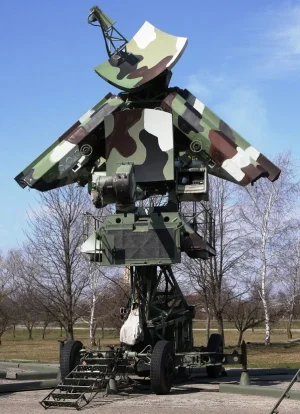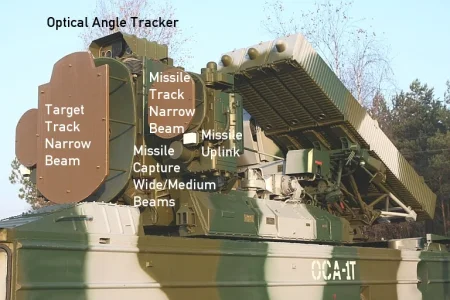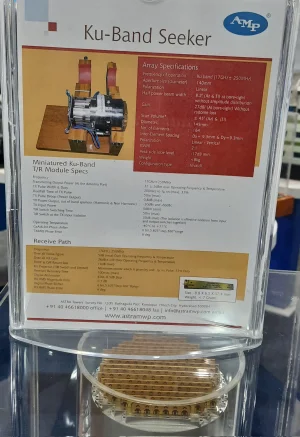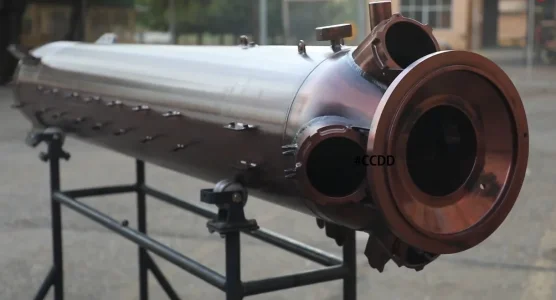- Joined
- Jun 30, 2024
- Messages
- 1,239
- Likes
- 2,847
SYSTEMS
S-125 systems were bought by IAF for close range air defence of military air bases
Specifications :
Missile -
RANGE/SERVICE CEILING = 35km/18km
MASS= 950kg
Warhead= 60kg high-explosive Fragmentation warhead
Radar -
The P-15 was designed to detect aircraft flying at low altitude
2. SNR-125 radar [Fire control radar]

The SNR-125 has one small UV-10 transmitter-receiver antenna, flanked by two larger UV-11 receiver antennas mounted orthogonally. The UV-12 antenna mounted on top is for transmitting commands to the missile.
250 kW I/D-band tracking, fire control and guidance radar (range 40 km/25 miles, second mode 80 km/50 miles) Its parts: An UV-10, 3 cm wavelength, narrow beam transmitter/receiver antenna; 2 pcs of UV-11, 3 cm wavelength, wide beam receiver antenna for target tracking,an UV-12, decimeter wavelength, missile command transmitter antenna and a 9Sh33A camera (optical channel).
- S-125 GOA
- 9k33 OSA
- AKASH
- SAMAR
- SPYDER
- MRSAM
- S-400
- MANPADS (IGLA+IGLA-S)
S-125 systems were bought by IAF for close range air defence of military air bases
Specifications :
Missile -
RANGE/SERVICE CEILING = 35km/18km
MASS= 950kg
Warhead= 60kg high-explosive Fragmentation warhead
Radar -
The P-15 was designed to detect aircraft flying at low altitude
| Frequency | UHF |
|---|---|
| Range | 150 km |
| Altitude | 3 km |
| Diameter | 11 meters |
| Azimuth | 360 degrees |
| Elevation | 2-14 degrees |
| Precision | 0.3 km range |
| Power | 270 kW |
2. SNR-125 radar [Fire control radar]

The SNR-125 has one small UV-10 transmitter-receiver antenna, flanked by two larger UV-11 receiver antennas mounted orthogonally. The UV-12 antenna mounted on top is for transmitting commands to the missile.
250 kW I/D-band tracking, fire control and guidance radar (range 40 km/25 miles, second mode 80 km/50 miles) Its parts: An UV-10, 3 cm wavelength, narrow beam transmitter/receiver antenna; 2 pcs of UV-11, 3 cm wavelength, wide beam receiver antenna for target tracking,an UV-12, decimeter wavelength, missile command transmitter antenna and a 9Sh33A camera (optical channel).


















